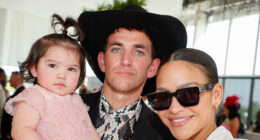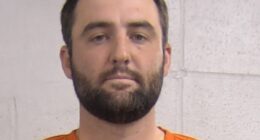It’s common for the first step in the process of diagnosing someone with autism to be a simple screening test performed by the person’s regular doctor. Screening can determine whether an individual has traits and behaviors that are common for people with autism, after which the doctor will refer the person to a specialist for a better diagnostic evaluation. But if the person passes the screening test, he or she will likely not be referred for further evaluation.
So you can imagine just how important it is for these first screening tools to be accurate and easy to use so that people can get their proper diagnoses. But recently, a pair of graduate students discovered an error in the NICE screening guidelines for the Autism Quotient-10 (AQ-10) test that may be causing some people with autism to go undiagnosed.

The two graduate students, Lucy Waldren and Rachel Clutterbuck, attend the National Institute for Health and Care Excellence (NICE) in the UK as students of Punit Shah, associate professor of psychology at the University of Bath in England. They discovered what at first appears to be a pretty small discrepancy between the way two different papers interpreted the rules of the Autism Quotient-10 (AQ-10) screening test.
The original paper said that individuals who score a 6 or above should receive further evaluation. The other paper (from NICE) said that individuals who score above a 6 should receive further evaluation.
“We thought that was really odd,” says Lucy. “So we went and dug through the justification they gave for how they came up with their cutoff score, and we couldn’t really find a reason why they chose the 7 over the 6. So we think they made a mistake somewhere.”

At first, the students thought they must be wrong about their discovery. But the more they went over the details of each paper, the more they realized something had to be amiss.
“At first, we just kept checking and double-checking and triple-checking it. We must have checked this dozens of times, thinking, ‘Well, are we sure here?’” says Shah. “Once we were satisfied from an academic perspective that these mistakes can happen, and Lucy did a really good job of interrogating all the appendices and all the nitty gritty of what the NICE guideline group had looked at, we then made the decision at that point to write something on this and send it to an academic journal as soon as possible to just try to make people aware of this.”
Whether or not to include a score of 6 may seem sort of insignificant…until you’re one of the people who scored a 6. If your doctor is using the guidelines from NICE, he or she may not refer you to a specialist even though you might actually have autism.
READ RELATED: Dramatic and Picturesque View with Best Steam Locomotive Vacations On Rail

“We can’t know how many people may have been affected by this. If people have missed out on further assessment and a diagnosis because of it, they then won’t have had access to the same level of care and support, including financial support,” says Lucy. “That will have a knock-on effect on their mental health from the lack of support. They also don’t have the validation of receiving the diagnosis that they feel like they should. So it could have had a really serious impact on people’s lives over the years.
“From a research point of view, the measure is used as a cutoff for participants. So data might have been lost as a consequence of people using the different cutoff as well.”
The students published their findings in The Lancet Psychiatry. Happily, NICE was not too proud to admit their error and correct it. The school issued a statement promising to correct the issue.
“We were concerned that the guidelines weren’t going to be changed,” Shah said after the announcement. “We were consequently really pleased to see that NICE have taken the issue seriously and have dealt with it so promptly.”

Shah says this isn’t the first time that mistakes in autism screening guidelines have been made. “Other autism spectrum trait measures have been quite noisily or messily applied in the literature. We found a couple of papers in which they used the incorrect cutoff to include or exclude people in their studies,” he says. “I think at some point, those researchers will need to revisit their data or have a think about trying to replicate their basic effect. Some people have been receptive to that idea and have checked whether they’ve implemented the wrong cutoff. But generally, people have been not as forthcoming about talking about any mistakes they’ve made.”
Lucy, Rachel, and Dr. Shah will continue to look at the use of autism traits in research in an attempt to determine what changes need to be made to improve their accuracy.
In the meantime, this may be helpful information for some people who think they or their loved one have autism but haven’t been able to get a diagnosis. It’s worth getting a second opinion or talking to your doctor about the possibility of an error in the screening process, because even doctors and researchers make mistakes.
Source: The Autism Site Blog





